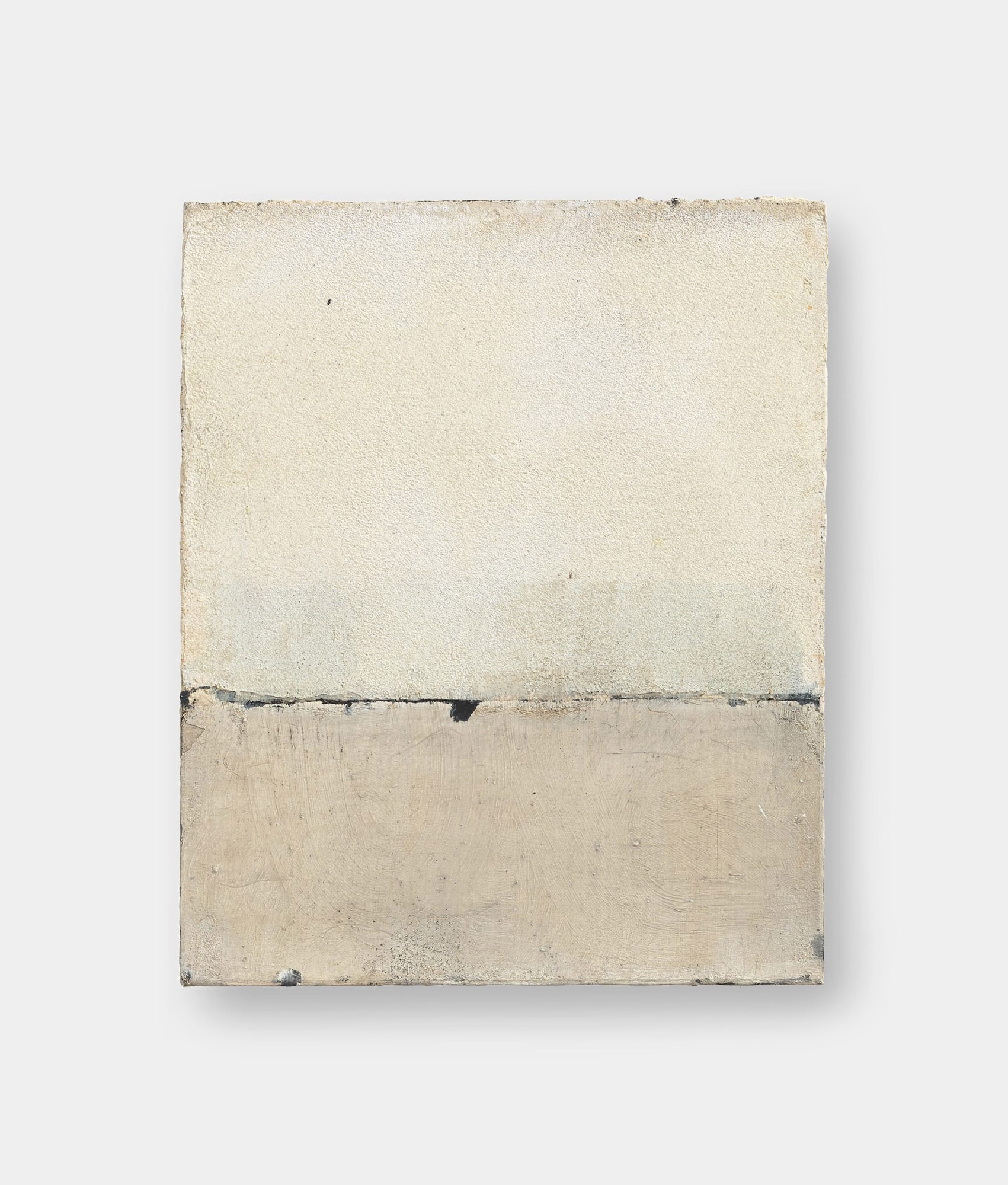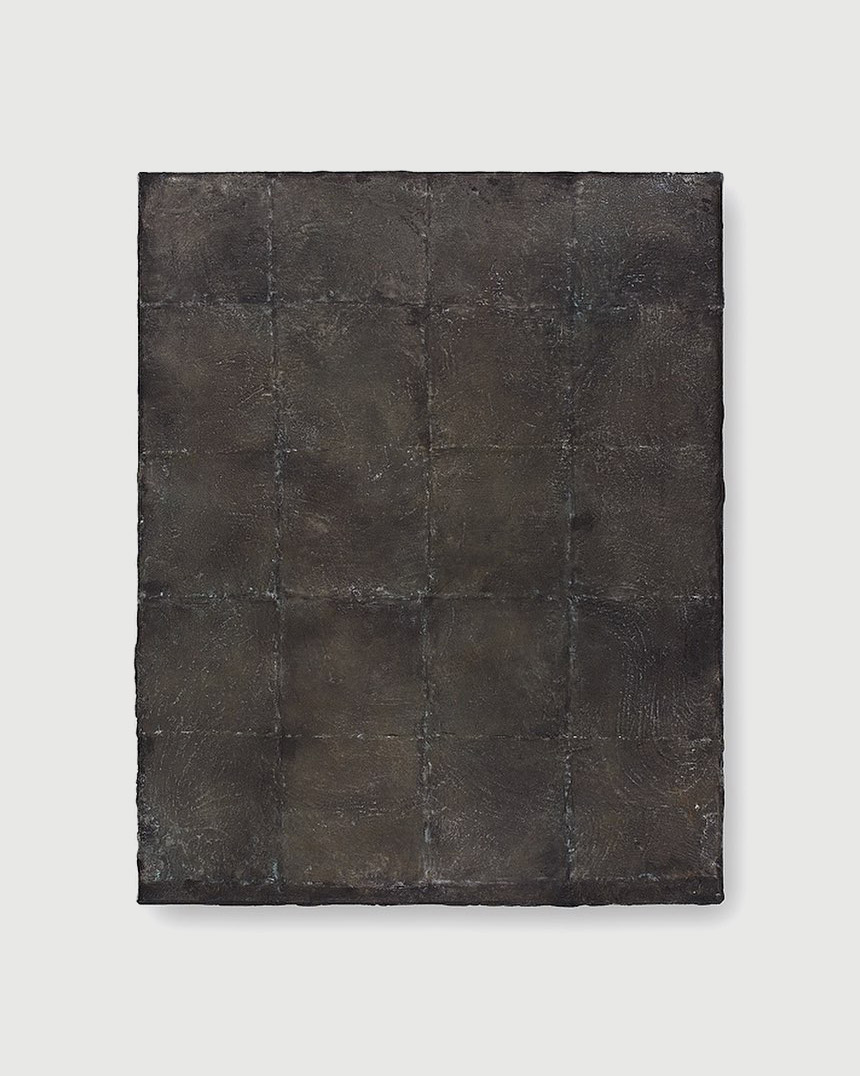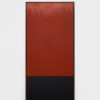Japanese painter Hideaki Yamanobe (b. 1964) is known for his contemplative and minimalist paintings. His work subtly and uniquely combines the traditions of Western painting, such as Abstract Expressionism, with influences from Asian culture. In doing so, he leads the viewer into a space of stillness and personal depth – a space that is at once introspective and charged.
Born in Tokyo on August 21, 1964, Yamanobe’s path initially led him to the prestigious Tokyo University of the Arts, where he studied painting from 1985 to 1991. With the help of a scholarship, he was able to continue his education in Germany. Today the artist lives and works in Cologne, Düsseldorf, and Tokyo.
Yamanobe’s paintings are characterized by their reduction to black, white, and countless shades of gray in between. This minimalist color scheme gives his monochrome works an unobtrusive presence that nevertheless demands patient and attentive viewing of the artwork. The deliberate application of multiple, slowly lightening layers of color on a black background creates contemplative and suspenseful abstractions that leave room for the viewer’s own perception.


The focus of Hideaki Yamanobe’s art is not on representationalism but on the exploration of depth. His canvases and works on paper are full of resonance and quiet spatiality – they “sound,” as the artist himself describes it. Contemporary music plays an essential role in his work, and he constantly seeks to translate compositions visually and make them tangible.
A particularly fascinating aspect of Yamanobe’s work is the combination of Western understanding of painting and Asian sensitivity to images and materials. In this way, he succeeds in developing his very own visual language, as quietly as it is powerful, which takes the viewer on a journey into the depths of his own perception.
Hideaki Yamanobe is an inspiring artist who invites us to pause and immerse ourselves in silence. His contemplative and suspenseful minimalist paintings are a fascinating example of how cultural influences and individual creativity can combine to create works of art of timeless beauty and depth.
Further Reading
https://www.japan-art.com/artists/50-hideaki-yamanobe/overview/


